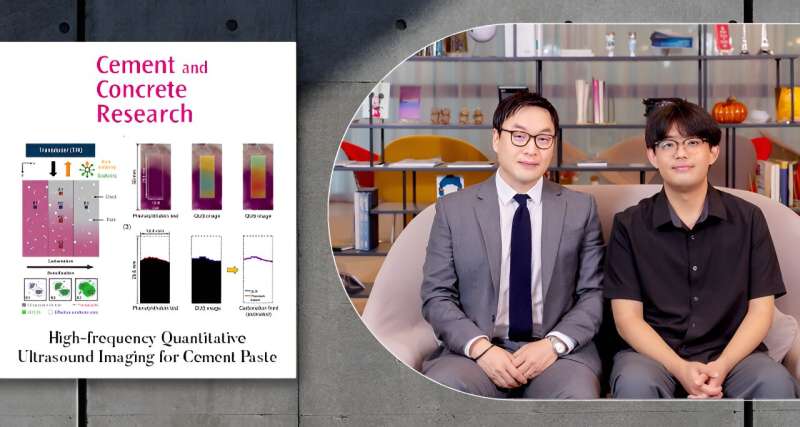This article has been reviewed according to Science X's editorial process and policies. Editors have highlighted the following attributes while ensuring the content's credibility:
fact-checked
trusted source
proofread
High-frequency quantitative ultrasound imaging for cement paste can measure carbonation depth nondestructively

A research team has introduced a new quantitative ultrasound (QUS) technology. This technology is capable of nondestructively measuring carbonation depth using high-frequency ultrasound signals (2.5 MHz). According to the research team, this marks the first time that the existing QUS method, generally used in a wide variety of clinical settings, has been successfully applied to the construction industry.
Their findings
have been published in Cement and Concrete Research. Concrete carbonation involves the capture of atmospheric CO2 and trapping it in
By analyzing ultrasonic scattering and attenuation characteristics of materials from collected ultrasonic signals and converting them into images, the team, led by Professor Gun Kim in the Department of Civil, Urban, Earth, and Environmental Engineering at UNIST, succeeded in detecting microstructural changes, specifically the carbonation depth, with an error margin of only about 1 mm compared to results obtained through the phenolphthalein indicator method, a traditional destructive testing approach.
This breakthrough demonstrates the feasibility of non-destructively measuring carbonation depth with pinpoint accuracy.
Typically, universal ultrasound imaging examinations require expert interpretation due to inherent resolution limitations. However, the developed technology utilizes quantitative indicators specific to the material to construct image pixels, enabling even inexperienced individuals to easily identify structural changes in materials.
Professor Kim Gun commented, "This study is groundbreaking in demonstrating the applicability of quantitative ultrasound imaging technology from the biomedical field to the construction sector. The potential applications of this technology are vast, ranging from predicting the lifespan of automobile batteries to precise visualization of cancer tissues in future research endeavors."
More information: Seungo Baek et al, Can carbonation depth be measured in a nondestructive way? High-frequency quantitative ultrasound imaging for cement paste, Cement and Concrete Research (2024). DOI: 10.1016/j.cemconres.2024.107519




















